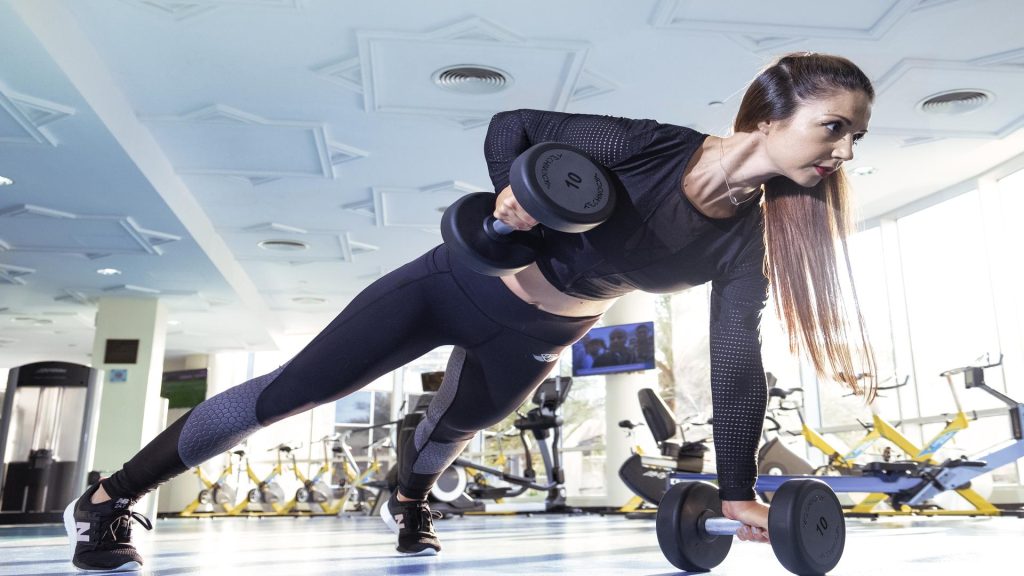
Outline:
- Introduction
- Importance of fitness equipment
- Types of fitness equipment
- Cardiovascular equipment
- Strength training equipment
- Flexibility and mobility equipment
- How to choose the right fitness equipment
- Assessing your fitness goals
- Budget considerations
- Available space
- Seeking professional advice
- Top-rated fitness equipment for home use
- Treadmills
- Exercise bikes
- Dumbbells and barbells
- Yoga mats and blocks
- Resistance bands
- Stability balls
- Maintaining and caring for your fitness equipment
- Regular cleaning and maintenance
- Proper storage
- Replacing worn-out parts
- Benefits of using fitness equipment
- Improved cardiovascular health
- Increased strength and muscle tone
- Better flexibility and mobility
- Enhanced weight management
- Stress relief and improved mental well-being
- Common misconceptions about fitness equipment
- It's only for the gym
- Expensive and not worth the investment
- Takes up too much space
- Safety tips when using fitness equipment
- Warm-up and cool-down exercises
- Proper form and technique
- Gradually increasing intensity
- Use of safety features, like safety belts and spotter arms
- Conclusion
Introduction
In today's fast-paced world, staying fit and healthy has become a priority for many individuals. While there are various ways to maintain good physical fitness, one effective approach is to incorporate fitness equipment into your workout routine. Fitness equipment can provide a range of benefits, from cardiovascular training to strength building and flexibility enhancement. In this article, we will explore the different types of fitness equipment, discuss how to choose the right equipment, highlight some top-rated options for home use, provide tips for maintenance and care, delve into the benefits of using fitness equipment, address common misconceptions, and offer safety tips when using this equipment.
Importance of fitness equipment
Fitness equipment plays a crucial role in achieving and maintaining a healthy lifestyle. Regular exercise using fitness equipment helps improve overall health by enhancing cardiovascular fitness, building strength and muscle tone, increasing flexibility and mobility, assisting with weight management, and promoting mental well-being. Moreover, fitness equipment allows for targeted workouts that can be tailored to specific fitness goals, making it an essential tool in achieving desired results.
Types of fitness equipment
Cardiovascular equipment
Cardiovascular or cardio equipment focuses on increasing heart rate and improving cardiovascular fitness. Examples of popular cardiovascular equipment include treadmills, elliptical trainers, stationary bikes, and rowing machines. These machines provide a full-body workout and are designed to burn calories, strengthen the heart, and improve endurance.
Strength training equipment
Strength training equipment is designed to enhance muscle strength and tone by providing resistance. Some commonly used strength training equipment includes dumbbells, barbells, weight machines, and kettlebells. These tools target specific muscle groups and can help individuals increase their strength, improve posture, and boost metabolism.
Flexibility and mobility equipment
Flexibility and mobility equipment, such as yoga mats, foam rollers, and stretching bands, focus on improving flexibility, enhancing joint mobility, and preventing injuries. These types of equipment are essential for stretching exercises and can aid in recovery after intense workouts.
How to choose the right fitness equipment
Selecting the right fitness equipment requires careful consideration of several factors:
- Assessing your fitness goals: Understand your specific fitness goals, such as weight loss, strength building, or flexibility improvement, to determine the type of equipment that aligns with your objectives.
- Budget considerations: Set a budget that suits your financial resources and explore options within that range. Consider both the upfront cost and the long-term maintenance expenses.
- Available space: Evaluate the available space in your home or gym to ensure that the equipment you choose fits comfortably without causing any inconvenience.
- Seeking professional advice: If you are unsure about which fitness equipment aligns with your goals, seek guidance from a fitness professional or trainer who can provide personalized recommendations based on your needs and physical condition.
Top-rated fitness equipment for home use
Following are some of the top-rated fitness equipment options for home use:
Treadmills
- H1: Treadmills
- H2: Features and benefits
- H3: Calorie burning and cardiovascular health
- H4: Convenience and safety features
Treadmills are versatile machines for walking, jogging, and running indoors. They allow users to control speed, track progress, and monitor heart rate. Treadmills provide excellent cardiovascular workouts, burn calories efficiently, and offer convenience and safety through features like adjustable inclines and emergency stop buttons.
Exercise bikes
Exercise bikes, including upright bikes and recumbent bikes, provide low-impact cardiovascular workouts. These stationary bikes are perfect for individuals with joint issues or those seeking a low-impact exercise option. Exercise bikes are known for their efficiency in burning calories, improving cardiovascular health, and increasing lower body strength.
Dumbbells and barbells
Dumbbells and barbells are versatile strength training equipment that target various muscle groups. They are ideal for home use as they require minimal space and can be used for a wide range of exercises, including bicep curls, shoulder presses, and squats. These free weights allow users to gradually increase resistance, helping build muscle strength and endurance effectively.
Yoga mats and blocks
Yoga mats and blocks are essential fitness equipment for flexibility, mobility, and relaxation exercises. They provide a comfortable and non-slip surface for yoga, Pilates, and stretching routines. Yoga mats offer cushioning, stability, and grip, allowing individuals to perform poses and stretches safely and effectively.
Resistance bands
Resistance bands are portable and lightweight equipment that provide resistance during strength training exercises. They are a cost-effective alternative to traditional weight machines and dumbbells. Resistance bands come in various levels of resistance, making them suitable for users of different fitness levels. They help build muscle strength, improve endurance, and enhance stability.
Stability balls
Stability balls, also known as exercise balls or Swiss balls, are large inflatable balls designed to improve balance, core strength, and flexibility. They can be used for a variety of exercises, including stability ball crunches, planks, and back extensions. Stability balls engage multiple muscle groups, particularly the core muscles, providing an effective way to improve overall strength and stability.
Maintaining and caring for your fitness equipment
Proper maintenance and care of fitness equipment are crucial to ensure their longevity and optimal performance. Consider the following tips:
- Regular cleaning and maintenance: Clean your fitness equipment routinely using appropriate cleaning solutions to remove sweat, dirt, and bacteria. Check and clean the belts, pulleys, and other moving parts to prevent any mechanical issues.
- Proper storage: Store your fitness equipment in a dry and clean area, away from direct sunlight or extreme temperature fluctuations. Protect the equipment from impact or accidental damage by storing them appropriately.
- Replacing worn-out parts: Inspect your fitness equipment regularly for any signs of wear and tear. Replace any worn-out parts promptly to avoid accidents or further damage. Follow the manufacturer's recommendations for maintenance and parts replacement.
Benefits of using fitness equipment
Using fitness equipment offers a wide range of benefits that contribute to overall health and well-being:
- Improved cardiovascular health: Regular exercise using fitness equipment strengthens the heart, reduces the risk of cardiovascular diseases, and improves overall heart health.
- Increased strength and muscle tone: Strength training equipment helps build muscle strength, increases muscle tone, and improves overall body composition.
- Better flexibility and mobility: Equipment like yoga mats and resistance bands aid in improving flexibility and joint mobility, reducing the risk of muscle imbalances and injuries.
- Enhanced weight management: Fitness equipment facilitates calorie burning, thus aiding in weight management and weight loss goals.
- Stress relief and improved mental well-being: Engaging in physical activity using fitness equipment releases endorphins, promoting mental well-being, reducing stress, and enhancing mood.
Common misconceptions about fitness equipment
Despite the various benefits, there are some common misconceptions surrounding fitness equipment that need to be addressed:
- It's only for the gym: Fitness equipment is not limited to gym use. Many options are available for home use, allowing individuals to exercise conveniently within their own space.
- Expensive and not worth the investment: While certain equipment can be costly, there are affordable options available. Considering the long-term benefits to physical health, fitness equipment can be a worthwhile investment.
- Takes up too much space: Not all fitness equipment requires significant space. Many compact and foldable options are available to accommodate various living arrangements, including apartments and smaller homes.
Safety tips when using fitness equipment
Using fitness equipment safely is essential to prevent injuries and ensure an effective workout:
- Warm-up and cool-down exercises: Begin each workout with appropriate warm-up exercises to prepare the body for exercise and end with a cool-down session to gradually reduce heart rate and prevent muscle soreness.
- Proper form and technique: Learn and use proper form and technique for each exercise to minimize the risk of injury and maximize results. Seek guidance from a fitness professional if necessary.
- Gradually increasing intensity: Avoid overexertion by gradually increasing workout intensity, allowing the body to adapt and reduce the risk of strain or sprain.
- Use of safety features: If available, utilize safety features provided with fitness equipment, such as safety belts or spotter arms, to minimize the risk of accidents or injuries.
Conclusion
Fitness equipment offers numerous advantages in achieving and maintaining good physical health. By incorporating cardiovascular, strength training, and flexibility equipment into your exercise routine, you can improve cardiovascular fitness, increase muscle strength and tone, enhance flexibility and mobility, manage weight effectively, and promote mental well-being. Remember to choose the right equipment based on your goals and considerations, maintain and care for your equipment, and prioritize safety during every workout. Enjoy the journey to better fitness with the help of suitable fitness equipment.
� Fitness Equipment Guides
� FITNESS
� EQUIPMENT
� Explore the world of fitness equipment and learn how to choose the right ones for your needs. Discover top-rated options for home use, understand the benefits, address misconceptions, and ensure safety while using fitness equipment.
Thank you for reading. For more insights, visit our #healthzone#3.com/blog">BLOG. We appreciate your support!



